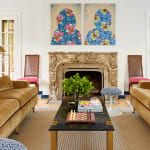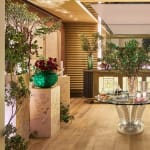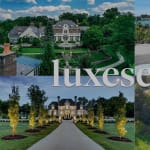因地制宜的设计灵感为创意建筑公司提供线索
作者:LISA KLEIN
Buildings should respond directly to the place in which they are constructed, rather than cater to the whims of their designers and be thrown into any old environment. Such is the philosophy of Patkau Architects.
The Canadian firm, based in Vancouver, B.C., calls this stance “a search for found potential,” its architects looking to the site of each structure they create for the keys to its design.
“We’re very interested in the characteristics that make architecture at home in different places as opposed to something that’s universal,” said John Patkau, principal of Patkau Architects.
“Our work tends to be differentiated by the places where we’re working, so a project in a big urban city is typically very different from a project in a rural situation, for example.”

Sense of place
From biophilic swirls nestled in the forest to gleaming city spikes, art museums housed in architectural art to residences that fade into the ocean, Patkau Architects specializes in designing buildings that blend in, in a good way.
“We often work in very powerful contexts, like a beautiful forest or an ocean front or the heart of a big city, and that affects the basic expression of the building,” Mr. Patkau said. “There’s a lot of diversity in our work because of the diversity in the setting.”
For any project, the Patkau team closely studies the climate, landscape and geography of its location to make decisions about what it will ultimately look like. The goal is for each building, whether commercial or residential, to artfully blend into its surroundings.

“In a natural setting we look at the topography, the type of vegetation, the orientation in terms of the sun or views – all of the natural characteristics of a place go into the design of the building,” Mr. Patkau said.
“A number of our houses in natural settings are dark, like the Whistler Museum in a forest. Dark colors recede into shadows. In that sense we are really trying to allow the building to be subservient, in a way, to nature.”
Urban projects, where fitting in often means standing out, call for a much different approach.
“When we did the polygon gallery, which is in a formal industrial area in the city, that is a reflective building,” Mr. Patkau said. “It’s more animated, more assertive in character.”
Finding harmony

So what does this found potential end up looking like?
Linear buildings are somewhat of a signature for Patkau Architects.
“When we have the opportunity to make one, we do,” Mr. Patkau said. “We think it gives the building more energy, more animation, because of the extreme dimensions. We did a house called the linear house which is only 16 feet wide but long.
“One of the reasons we make the buildings long is that they don’t tend to be seen so much as an object – the elongation allows them to become more topographic, more like a natural thing,” he said.
“We also fragment buildings so that they have the ability to be sort of almost like a natural formation.”
The firm also tries to connect each building with its outer environment, whether that be a natural or cityscape.
“We usually try to find ways to break the envelope, so you have a more integrated feel between the inside and outside,” Mr. Patkau said. “When you have a box, you really feel the boundaries. We try to keep the emphasis where we want it.”

If there is a forested, oceanfront or skyline view, there will most likely be large windows looking out at it. Skylights are used on the opposite side of the same space to bring even more light in.
While the nature of the setting is of upmost importance to a project, so is the nature of each client – another way in which every Patkau-designed building is unique.
“The client’s interests and sensibility is one of our starting points,” Mr. Patkau said. “So the project reflects the interests of the client rather than being the brand of the architect.”
The firm maintains a small team of just 20 architects, with everyone getting the chance to work on different phases and aspects of the design process with each new project.
“It’s a lot of work, but it’s fun,” Mr. Patkau said. “We don’t take on a lot of work. We limit what we do so that we can develop each project intensely. The work always tends to be innovative – we don’t do a lot of repetition.”






